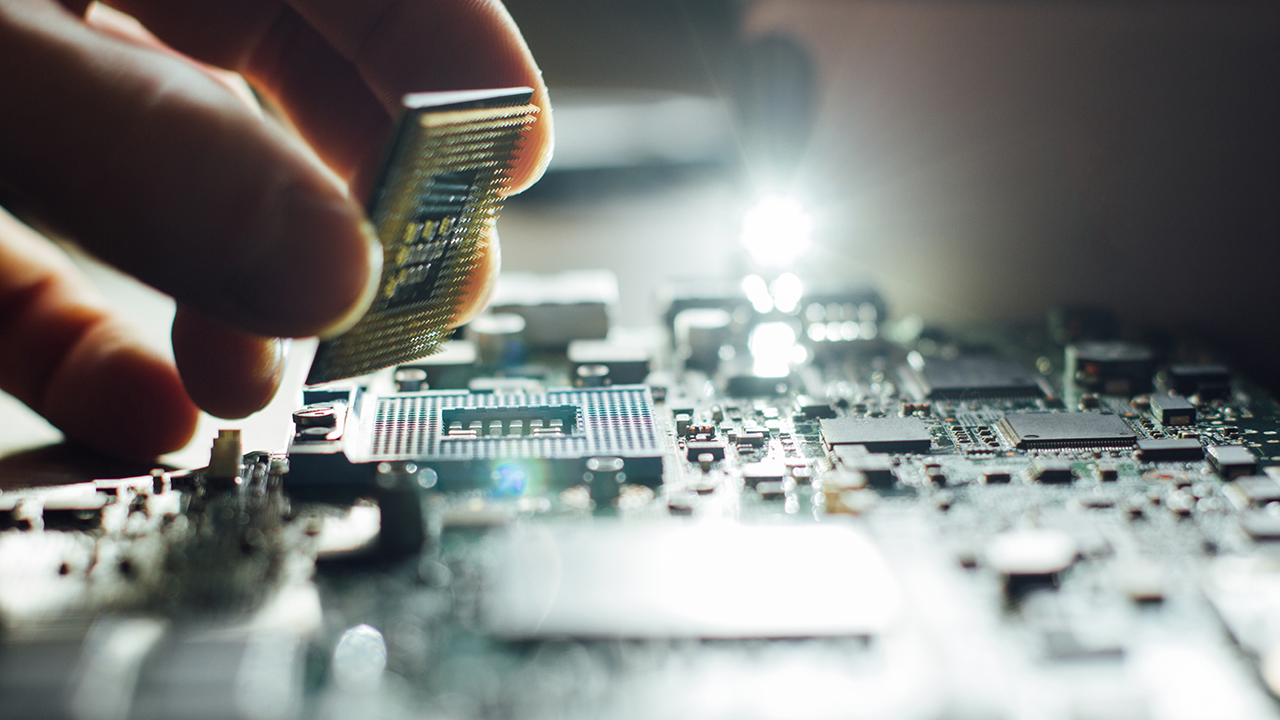What are the challenges of the Internet of Things today? Are there barriers impacting the move to Industry 4.0? And how can you prove out a concept that will help your organization’s bottom line? As with all substantial movements, while the IoT is growing rapidly, there are still concerns and challenges involved in IoT planning and deployment that can act as barriers to innovation for smart cities and commercial and industrial organizations (the Industrial IoT) along the way. The obstacles range from cost concerns to lack of awareness about ROI to inadequate technology expertise and security concerns.
In this article, we will discuss the key IoT challenges shared with Digi technical solutions teams by our customers, and how innovative organizations are moving past them.
IoT Challenge #1: Cost and ROI Concerns

- A company simply may not have the awareness of the potential benefits of IoT, such as better or new insights, operational improvements, fewer unnecessary truck rolls and other enhancements that can dramatically improve the business value and reduce costs in the future. A technology upgrade is therefore seen as an unnecessary expense.
- The company culture is steadfast in performing at its current level, with its current systems and technologies, and the notion of upgrading to connected technologies just looks like dollar signs and disruptions.
- Budgets are tight as it is; adding to the technology investment is untenable from that perspective, so there is no motivation to evaluate the potential efficiencies and cost savings.
As we will share in this post, many companies find that their IoT investment pays for itself. In fact, they typically find additional ROI, beyond what they anticipated in researching and launching their IoT deployment trials.
Making the Business Case for an IoT Solution
Business transformation is not pain-free, and the costs in employee time and real world operational costs can be significant. If you are working on making a case in your organization that IoT can support a better customer experience, offer critical new insights, or provide process improvements, you will need to provide education to stakeholders that the ROI can ultimately outweigh the cost.
There are a few game changers that are driving adoption of IoT technologies, which can support your quest to explain the value of an IoT project:
- IoT delivers ROI in real world dollars: As we described in our blog post, The ROI of IoT: Show Us the Money, many IoT projects start with a need. It may be a desire to work smarter and reduce waste, a need to replace failing wired systems, or a desire to cut costs in areas where manual labor no longer makes sense. But in fact, the companies we profiled in the article saw a return-on-investment in real world dollars as well. These are stories you can can share with decision makers who are evaluating the pros and cons of an IoT deployment.
- Seeing is believing:
- To truly evaluate the benefits and trade-offs of changing infrastructures and methodologies, many companies need to see examples of IoT implementations. For example, Digi customer stories such as Otis or bioFeeder can provide insights into what’s possible with efficiency and process improvements.
- Another way in which companies evaluate the benefits of IoT for their specific application is through a trial. It’s fairly low-risk to develop a proof-of-concept to test out the theories behind a potential adoption of IoT technology, and proving out the concept can provide the data and information to present findings to higher levels of decision makers in the organization.
- Often times companies can discover benefits they didn’t even know existed throughout a proof-of-concept. For example, the intent of the Otis project was to help give insights into maintenance schedule of elevators and to provide critical insight to drive preventative maintenance and help lower business costs. After implementation and seeing data that they had never previously known, it gave great insight into usage of elevators and helped to identify where and when elevators were being used. This information supported process improvements and helped better develop customer leads based on this information.
Tip: Pick an IoT partner that can support your quest to define your IoT ROI strategy. For example, Digi has multiple resources available, including a worldwide field applications team a Professional Services team and a Wireless Design Services team that can support your business with anything you may need, from proof-of-concept to site surveys, cellular and other certifications, product development and go-to-market strategy.
IoT Challenge #2: Technical Expertise

There is no doubt that planning and implementing IoT projects is a complex process. The considerations depend greatly on the type of application, its physical location, the number of devices that must be connected, whether cellular, Wi-Fi, or Ethernet WAN is needed for primary or backup connectivity, as well as the importance of the data provided and data throughput required.
These factors should all be carefully considered before you get to the actual system design, where things like board layout, antenna selection and mitigation of radio frequency interference can make or break the business case of the project. Many companies become intimidated by the range of decisions to make in the introduction phase, while others stumble over hurdles on the winding path through prototyping, development, testing, certification and deployment of the solution.
Staffing an IoT Project
The concerns often come down to the challenge that the existing staffing cannot take on the design and implementation of an IoT project. They may not have the skills and knowledge or the ability to add an IoT project to an already packed schedule. There are many realms of expertise needed to deploy an IoT project such as radio frequency design, hardware circuitry design, embedded platform operating systems, data routing and implementation, Internet WAN connectivity, cloud connectivity, security requirements, restful API implementation and many others.
The question many companies ask is how to augment their technical staff for the duration of an IoT development and deployment project.
Tip: Consider working with a team that can support your design and build needs, only for the duration for which you need them. Digi’s Professional Services and Wireless Design Services teams, for example, can temporarily augment your own engineering team to ensure successful IoT project development and deployment. Our teams can help with anything from custom software development to backend server implementation, PCB layout and design, cellular, Bluetooth, Wi-Fi and other certifications, antenna and RF design, manufacturing test design and much more.
IoT Challenge #3: Shifting Technology

The available technologies supporting the Internet of Things are vast and growing. Just choosing a sensor, radio modem or router might feel like it requires a Ph.D, given the huge array of options targeted at the growing number of use cases. Then there are IoT cloud platforms to evaluate, edge compute technologies to incorporate, and the range of communication protocols and IoT networks. A key consideration is finding a solution provider that partners with you and helps to customize these disparate pieces for your business needs.
One of the concerns we hear about the most today is network migration concerns. Suppose you have devices operating on a 3G network, and you know that those networks are heading toward the sunset. Do you migrate to 4G LTE? Will 4G LTE be supported for your deployments around the world? Or should you wait until 5G is fully deployed?
There are several risks with jumping on the 5G bandwagon too early:
- Initial 5G products will be expensive when they become available, so early adopters run the risk of paying much more to jump on board than those who let the technology mature and grow.
- With any new technology, early adopters run the risk of running into issues as the whole ecosystem, including chipsets, modems, devices, test and certification, and carrier networks are still learning.
- Initial 5G products are designed for high-speed applications. They will be “overkill” for many applications that simply need to get connected, gather data from sensors and send it to the cloud for management from an IoT cloud platform interface.
- Initial 5G networks are not likely to be ready in time for deployed devices to migrate directly from 3G, as 3G network shutdowns are underway now and nationwide deployment of 5G are a few years out. For information, see our article providing 3G Network Shutdown timelines around the world and by carrier.
Reasons to move to 4G LTE deployments:
- Depending upon the module used, 4G modules often support 2G/3G fallback, meaning these products can still be deployed around the world, where LTE and 5G networks are not deployed and will not be for quite some time.
- 4G products with LTE Advanced Pro CAT18 modems are capable of Gigabit LTE speed today and can support just about any use case out there today.
- The first wave of 5G products will operate in Non-Standalone (NSA) mode, which means that they first connect to a 4G LTE network and then use 5G for additional bandwidth (where available). Additionally, Dynamic Spectrum Sharing (DSS) will put 4G and 5G service concurrently on the same band to provide investment protection and longevity for 4G LTE devices.
- Prices of data plans are dropping by about 25% year over year and this is driving down the overall cost of upgrading to 4G.
: Choose a technology partner who has available 4G LTE technology today and who understands the path to 5G. Whether the products are “5G ready” or can be extended with 5G components in the future, taking this step can help ensure that you do not invest in obsolescent technology. For example, Digi offers products today that can be extended and are powerful enough to handle 5G speeds when the time is right.
It is important to note that LTE stands for Long Term Evolution. 4G LTE is still relatively young, and is designed to support applications built on it for a very long time to come. For this reason, it can behoove companies that are seeking a transition path to move now to 4G to obtain massive benefits in network speed and stability, knowing that a migration to 5G will be well down the road. A great strategy, therefore, is to connect with 4G and then accelerate with 5G.
IoT Challenge #4: Remote Access to Deployed Devices

If you have a wired system now, one thing is certain: it is fairly simple and straightforward to understand and to administer. If a machine of some kind fails, for example, you might send a technician in a truck out to the site to assess the problem and fix it. With IoT, wired systems are replaced with dozens, hundreds or even thousands of small devices for gathering, processing and communicating data up to the cloud. So the challenges when it comes to updating and fixing equipment are very different. The notion of sending a truck out to “the site” takes on all new meaning.
What Can Happen If You Don’t Have Remote Access?
Gaining access to your machines, equipment and devices, wherever they are deployed, is critical for a range of reasons. It’s important to have a strategy that supports ongoing management. With wireless devices, they may be in remote locations and/or located in very hard to access spots that make it very difficult to manage locally.
Let’s look at a common example in smart cities IoT applications today: city lighting. Going wireless means smart cities can implement automation in their municipal lighting systems. Sensors installed in the lights can detect lighting conditions and turn on only when needed. Because dusk on a sunny day occurs later than on an overcast day, an enormous amount can be saved by waiting to turn the lights on when they are needed, while reducing the city’s energy footprint.
The challenge, however, is that all of those devices need to be managed. They may need a firmware upgrade to improve functionality, or you may need to install new edge scripts or configurations in order to update and add functionality, or a device may need to be rebooted. Managing these changes manually simply won’t work, for multiple reasons:
- Not just any personnel can make the fix. You would need a large “cherry picker” truck to reach the installed devices.
- If you need to make multiple changes to multiple devices, such as a firmware patch, it does not make sense to send a truck, as these updates can be handled from a remote computer. But manually driving around from streetlight to streetlight to make those firmware updates one by one could be a multi-day or multi-week process, depending upon the size of your deployment.
- Updating many devices at once can be incredibly cumbersome if you don’t have a way of knowing the currently implemented firmware or configuration and can cause many headaches and bricked field devices if done incorrectly.
- If not rolled out quickly, security vulnerabilities can be used to access your devices to make changes, hack into proprietary information, or potentially bring down your network.
Remote Access and Network Security
As we will discuss in the next section, security is a key piece of any IoT deployment. Ensuring that you have central administrative access to your remote equipment can not only provide greater insights into network performance, but it can also provide a way to monitor system security, and ensure you can regularly update your deployment as security patches become available. Even when wired lines are available for critical assets, it is important to think about a redundant path of connection to the device, as any downtime can cause major liabilities and costs to your business.
Tip: A cloud-based remote management tool, such as Digi Remote Manager®, can enable you to make all firmware updates across your entire deployment in moments, vs. days. Digi Remote Manager allows you to create configuration profiles for individual devices or groups of devices, so that any device with that configuration can quickly be updated with new features or patches all at once from any Internet connected computer using authorized access. It can also run automated checks to ensure your devices remain in compliance with a golden configuration and keep you safe from hackers and user errors in configuration.
IoT Challenge #5: Security

Security is on everyone’s mind today, as cyber hackers continue to invent ways to access back-end systems and hack into networks where they don’t belong. If you have a wired system, it’s simply much less accessible by outside forces. Therefore, one of the challenges with moving to an IoT solution is that companies potentially open themselves up to more risk, unless they have a very sound security strategy in place.
Fortunately, both the strategies and the technologies for improving cybersecurity have advanced precipitously and have allowed wireless technologies and cloud platforms to become the device management platform of choice for many of the top fortune 500 companies today. Savvy companies are realizing that they absolutely must employ a sophisticated set of security tactics. Here are three of the most common security concerns for managing them.
- Securely managing data access on public networks over the various connectivity methods. For example, you may need to manage cellular and WAN connections out to the Internet. When you’re on a public network with a static IP, it is truly public; this means anyone on the Internet can find those addresses and potentially connect to or attack your device; they are not secure. You need to apply your own security.
- Identifying the best security strategy, when hackers are constantly changing theirs. The answer is a multi-pronged approach to security, which ensures that there is no single point of failure. Device security is much more than a methodology for manufacturing the device or setting passwords on devices when they are deployed. It is important to implement a strong security story on multiple layers, that will continue to manage vulnerabilities even as they change.
- Managing firmware versions over the entire life of an IoT deployment. The lifetime of an IoT device can be between 5 and 13 years, on average, while the average lifetime of a “secure” version of the firmware is about 9 months. This means that if you update the firmware for a device today, that firmware in 9 months will be considered insecure. For this reason, it is vital to have a remote management tool that enables you to keep up with security protocols and update firmware and passwords regularly.
Tip: Work with a company that takes a holistic and proactive approach to device management and security, so you can design, build and deploy highly secure and scalable IoT networks. Digi is in the IoT business and as such develops enterprise-level products that are meant to maintain the highest security standards and methods available today. Digi has a security framework, known as Digi TrustFence®, that provides a multi-layer security defense for IoT deployments using our connected devices. Digi also provides ongoing security updates in support of our customers, and any discovered vulnerabilities are reported on our Security Center.
Key Take-aways
As with any major shift in business practices, it is vital to take into account the many challenges that your business may face, and to have a plan of action for how to tackle each of those challenges, to ensure your business obtains its full return on investment. This is no different with the Internet of Things.
What is different are the challenges you may face and the rewards that come with a fully implemented IoT solution. In planning for an IoT project, you must discern the cost and return on your investment, and ensure you have the proper technical expertise to deploy and maintain such a solution. Additionally, it is important to understand the shifting technologies and the challenges you will face today and into the future to support your IoT devices, and have a remote management plan for continued updates and maintenance of your devices. And finally, it is critical to have a proper multi-pronged approach to security in order to maintain the highest security standards available. Digi can be your partner and help to supplement your team along the way to meet your needs and develop a solution that will benefit your company for many years to come in your IoT journey.